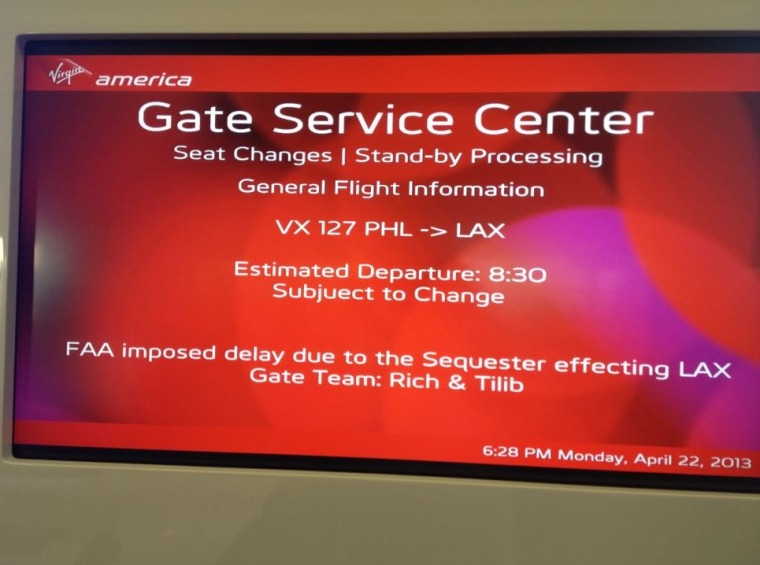The House approved the "Reducing Flight Delays Act of 2013" Friday – just before the start of a week-long congressional recess -- to keep furloughed air traffic controllers and other FAA employees on the job and make sure more flights are on time.
The Senate unanimously approved the measure on Thursday night after a week where the FAA blamed thousands of delayed flights on air traffic controllers it furloughed Sunday to meet sequester cuts.
The legislation now moves to President Obama. White House press secretary Jay Carney said at his press briefing on Friday that the President would sign the legislation.
“It’s a welcome development for the traveler and the travel community,” said Erik Hansen, director of domestic policy for the U.S. Travel Association, adding that the travel sector risked losing millions of dollars each day that the furloughs dragged on.
“Travel is a perception-based business so if you think that travel is going to be more of a hassle, that’s enough for you to avoid a trip all together – that’s lost spending for our industry.”
The FAA did not immediately respond to questions about whether the delays would end right away under the bill or whether the staffing issues needed more time to settle.
Hansen called the delays that accurred during the furloughs a huge disruption, but while there were reports of some travelers having to wait anywhere from 30 minutes to several hours for their planes to take off, industry observers said the situation did not turn out to be as bad as originally feared.
“The complaints about big delays -- and four hours stuck here and there -- may happen in individual cases, but across the board so far, it hasn’t been a disaster,” said Charlie Leocha, director of the Consumer Travel Alliance.
“However, that doesn’t excuse the fact that what DOT and the FAA are doing is cutting back on the air traffic controllers and the air traffic control system for which we passengers pay a user fee every time we fly.”
There were between 6,000 and 7,000 flight delays for all reasons – including weather and other factors -- each day from Monday to Thursday, Flightstats.com reported, calling that within the norm. About 77 percent of flights were on time through Thursday this week, compared to about 79 percent during the previous two months.
“The delays are not out of range of typical,” said Sarena Regazzoni, a spokeswoman for Flightstats.com.
“The furloughs may be impacting some airports more than others, but they are not as of yet overwhelming the system.”
More than 3,000 flight delays during the first half of the week were attributable to staffing reductions resulting from the furlough, according to the FAA.
The most affected regions varied from day today, with airports in Chicago, Las Vegas, Tampa, Dallas, Las Vegas, Los Angeles and New York all impacted at one point or another, the FAA reported.
A spokesman for the Port Authority of New York & New Jersey said there were “various delays” at the three major Big Apple airports this week, but that some were due to wind and weather issues.
On the West coast, Los Angeles International Airport experienced “a few flight delays but not a lot,” said spokeswoman Katherine Alvarado.
“It hasn’t been a big disruption,” she added.
Still, the travel sector was eager for the situation to be resolved before the busy summer season.
“That’s a critical time for our industry,” Hansen said, noting that any prolonged flight delays could have caused international tourists to stay away from the U.S.
“I’m not surprised that when this came to a head, Congress felt the need to quickly act and solve the problem, hopefully, within just a few days.”
